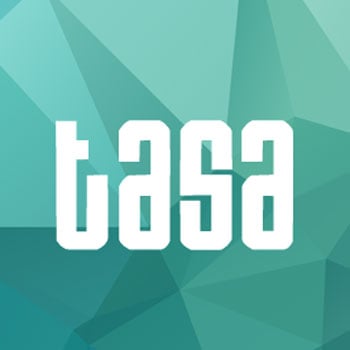Core Curriculum Panel Discussion - TASA 2016
/Panelists: Mark Greenwalt, College of the Mainland; Rebecca Dietz, San Antonio College; Amorette Garza, Del Mar College; Lisa Ehrich, Brookhaven College/DCCCD
- During this session the following topics were discussed:
- Current status of art education in the general education core curriculum
- TASA’s initiative to develop 3 new courses for the core
- THECB’s intent (via the ACGM) to delete 7 second - semester sophomore level studios
- The DCCCD’s Art Curriculum Committee update on their appeal to removal of these courses
- TASA’s efforts to support the appeal and strategies moving forward
CORE Issues
As we know, the 2014 Core eliminated studio art classes from the options of classes students could take. Although a few Community Colleges were initially successful in their efforts to restore some of the studio classes, recently, the THECB rejected these studio classes (again) from the Core because they have determined “while the activities themselves are important, the courses do not fulfill the purpose of the Texas Core Curriculum.”
Most art faculty understand and agree that there is great value in meeting the goals of the core objectives in the “Creative Arts” category through courses in the studio arts. TASA is, therefore, investigating the possibility of developing 3 new Art Appreciation courses that unite appreciation content with studio media. Preliminary communication with the THECB is underway to clear the path for this proposal.
TASA Proposal: Appoint a curriculum committee to review, edit and/or develop current course learning outcomes for the existing ARTS 1325, Drawing and Painting for non-majors to include and require the traditional lecture based content an analysis found in art appreciation and art history courses. The curriculum committee would also develop the course description and course learning outcomes for two new art courses (Ceramics and Sculpture for non-majors and Digital Art and Photography for non-art majors) to require the traditional lecture based content and analysis found in art appreciation and art history courses. All of these courses proposals would then be sent to the Undergraduate Education Advisory Committee (UEAC) for discussion edits and approval.
Other ideas were discussed as:
- Utilizing ARTS 1313 Foundations in Art (for non-art majors) as a Core class
- Developing a 3000 level portfolio class that Community Colleges could teach for those students preparing to transfer
ACGM issues
Last fall 2015, most of us returned from the summer break only to find out that the THECB had posted seven studio courses that were scheduled for deletion from the course inventory of Texas Community Colleges for Spring 2017.
ARTS 2324Life Drawing II ARTS 2349Digital Art II
ARTS 2327Sculpture II ARTS 2367Watercolor II
ARTS 2334Printmaking II ARTS 2336Fiber Arts II
ARTS 2342Art Metals II
The two-year gap between the announcement and the deletion was, according to the Academic Course Guide Manual (ACGM) Advisory Committee, intended to give colleges a chance to respond, appeal, and/or make adjustments to their schedules. Realizing the negative consequences of such actions, the Dallas County Community College District (DCCCD) Art Curriculum Committee decided to follow the appeal process outlined by the ACGM.
Summary and timeline of the DCCCD actions:
September 2015 –DCCCD Curriculum Committee begins work following the ACGM guidelines.
March 2016 - DCCCD Curriculum Committee submits the appeal to the ACGM.
April 2016 – ACGM representative, Rebecca Leslie, responds that the appeal is incomplete and will require additional information, but fails to be specific.
August 2016 – Rebecca Leslie notifies DCCCD Curriculum Committee that they have posted a new form (in February ’16 without informing anyone) need to resubmit using the new form.
October 2016 – Conference call with Rebecca Leslie and DCCCD Art Curriculum co-chairs clarifying the necessary additional information.
November 17, 2016 – DCCCD reps plan to attend the ACGM Advisory Committee fall public meeting in Austin.
December 2016 – DCCCD Art Curriculum Committee intend to resubmit the appeal on the new forms.
May 3, 2017 – DCCCD reps plan to attend the ACGM Advisory Committee spring public meeting in Austin.
In short, the new form requests not only the letters of support from at least 5 state universities that they will receive each of these courses as transferable credit, but also evidence that these courses specifically fit into a degree plan. Additionally, they want this information signed by the Chair or Dean of the Art Department and the Provost or Chief Academic Officer of that university.
The rational for these course deletions, according to Rebecca Leslie, is to facilitate students transferring as quickly as possible to the university and not waste time taking extra classes at the community colleges. When asked about the impact on students who may only get an Associates Degree as a terminal degree, or students transferring to private universities, or students who are in articulations that require these classes, or students who need more preparation prior to transferring, or NASAD standards, she was disinterested. She stated that the ACGM Advisory Committee is only concerned with issues that impact the transfer curriculum.
TASA support:
- Carol Fairlie, TASA president wrote a letter of support for the 1st appeal submission.
- TASA representatives plan to attend fall and spring ACGM Advisory Meetings.
- 2 and 4 year institutions will work together on articulations or 2 + 2 agreements.
- Universities will help facilitate completion of new forms.
- Other community colleges will launch the appeal process.
DCCCD appeal documents:
Curriculum Letter Nov 1, 2016
Texas 60x30 talking points
Brookhaven Sculpture II Syllabus
Texas Tech Sculpture II Syllabus

